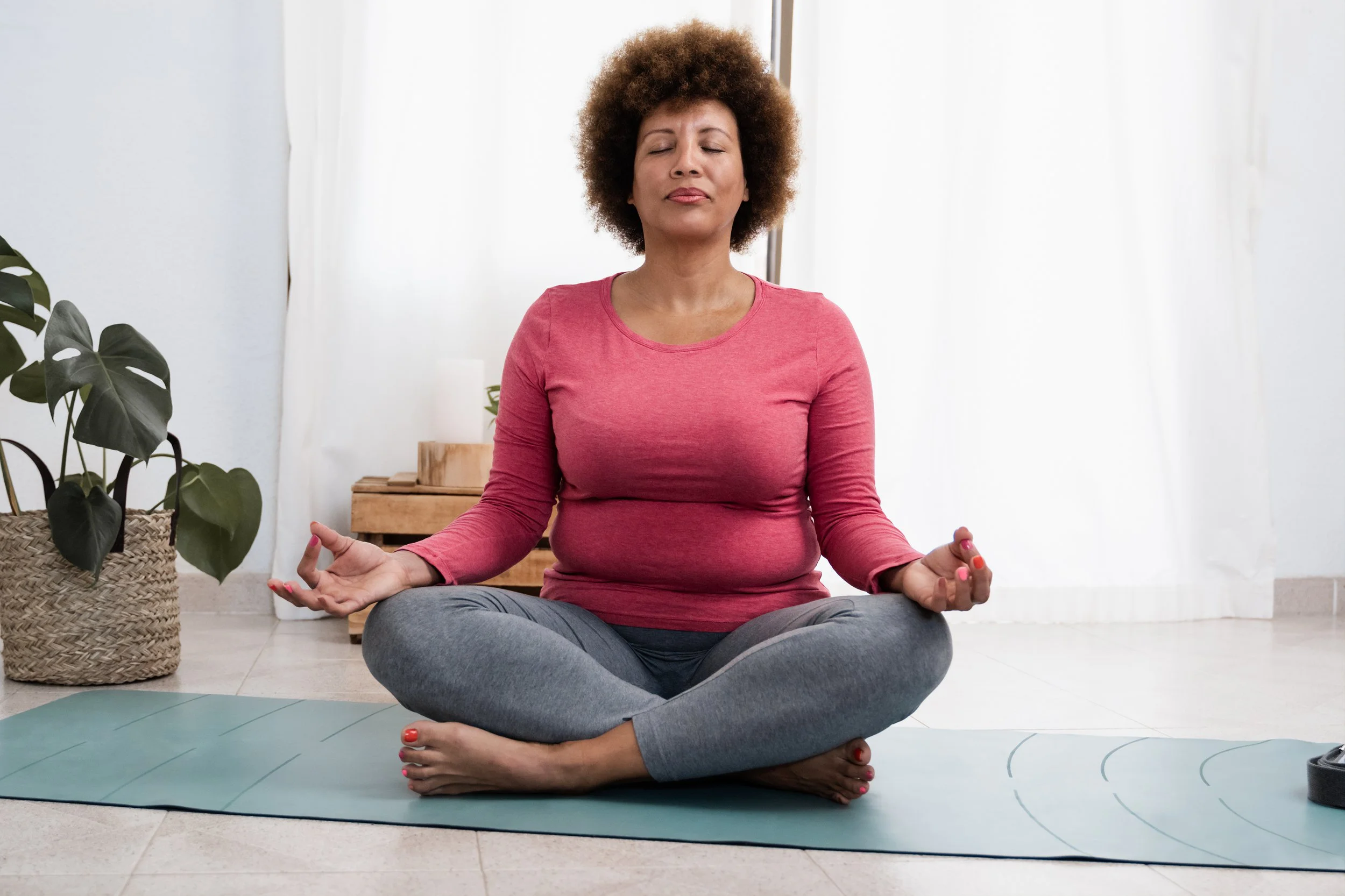Making Intentional Movement Accessible — Embracing Anti-Racism at Every Step
By Angel Austin
In a world grappling with the compounded impact of racism, understanding the significance of intentional movement from an anti-racist perspective is more critical than ever. This approach involves more than just physical motion; it's about making deliberate, conscious efforts in our daily actions, choices, and interactions to dismantle systemic racism and promote equity and justice. Recognizing the barriers to access of intentional movement through an anti-racism lens brings an awareness of the systemic inequities ingrained within fitness and wellness spaces, and society, in general.
For so long, the idea that movement is universally accessible was just a given. The fitspo industry has been blind to the intersections of race, class, and ability (for the most part). There’s been widespread failure to acknowledge the physical and invisible barriers that disproportionately hinder marginalized individuals from engaging in intentional movement. For many Black, Indigenous, and other people of color, the simple act of walking in their own neighborhood can be met with suspicion, reinforcing the racialized stigma attached to certain bodies.
On top of this, the narrative of inherent predispositions to illness based on skin color perpetuates the notion that certain communities must engage in excessive exercise to combat these assumptions. The unwelcoming environment of predominantly white fitness spaces, where individuals of color may face judgment or exclusion, further highlights the lack of inclusivity within the fitness industry. Understanding access to intentional movement through an anti-racism lens calls for a critical examination of the structural inequalities that perpetuate the inequity found in most fitness spaces and beyond.
Why This Matters
At its core, intentional movement is about mindfulness and purpose in our actions. From an anti-racist standpoint, it means being aware of the spaces we occupy (or take up), the narratives we support, and the impacts of our decisions on marginalized communities. It's about actively choosing paths that contribute to dismantling the structures and behaviors that perpetuate racial inequality.
The Power of Everyday Actions
Everyday actions, when informed by an anti-racist perspective, can become powerful tools for change. These kinds of actions include:
Committing to lifelong learning about racial injustice — understanding the historical context, and recognizing our own biases and privileges.
Diversifying your learning resources. Expand your reading list, podcast subscriptions, and social media feeds to include diverse perspectives on racial injustice, history, and privilege. Seek out books, articles, documentaries, and online courses authored by scholars, activists, and thought leaders from marginalized communities.
Engaging in critical reflection and dialogue. Set aside time for self-reflection and dialogue with peers about your own biases, assumptions, and privileges. Create a supportive environment where you can openly discuss uncomfortable topics, challenge misconceptions, and learn from each other's experiences.
Attending workshops and training sessions. Participate in workshops, training sessions, and seminars focused on racial justice, historical context, and unconscious bias. Look for programs facilitated by experts in diversity, equity, and inclusion who can provide valuable insights and tools for self-examination and growth.
Joining community organizations and initiatives. Get involved in local community organizations, advocacy groups, or grassroots movements dedicated to racial justice and equity. Engage in volunteer work, activism, or allyship efforts that address systemic injustices and promote positive change within your community.
Taking action and amplifying voices. Use your platform and privilege to advocate for racial justice and amplify the voices of marginalized communities. Support initiatives that promote inclusivity, diversity, and equity in education, workplaces, and society at large. Take concrete actions such as signing petitions, attending protests, and advocating for policy changes that address systemic racism and inequality.
Collaborating and partnering with BIPOC-owned fitness spaces or other professionals. Offer to host joint events, workshops, or fundraisers that promote diversity, inclusivity, and community engagement. By fostering meaningful connections and alliances, you can collectively advocate for the representation and empowerment of BIPOC individuals within the fitness and wellness sector.
Attending classes and workshops. Actively support BIPOC-owned fitness professionals by attending their classes, workshops, or events. Prioritize participating in their offerings and engaging with their services to contribute to their success and sustainability.
The Role of Self-Reflection
Change demands constant self-reflection. It requires us to examine our actions, confront uncomfortable truths, and accept criticism with grace. This ongoing process of self-examination and growth is vital in ensuring that our actions are not only intentional but also impactful in the fight against racism. Intentional movement fosters a sense of solidarity and community. It's a reminder that anti-racism work is not the responsibility of those who experience racism to solve; it's a collective effort that requires all of us to participate actively.
By moving intentionally, we stand together in a unified front against racism, supporting each other in our shared goal of equity and justice.The journey towards racial justice is long and complex, but each one of us has the power to make a difference. By being mindful of our actions, continuously educating ourselves, and actively participating in anti-racist practices, we contribute to the creation of a more equitable and inclusive fitness culture.



